As posted on FosterEDU blog
Our nation continues to combat the dropout crisis by increasing the high school graduation rate (from 80 percent in 2012 to 81.4 percent in 2013). It’s progress for education, but what about the achievement gap?1 The National Center for Education Statistics defines the achievement gap as the result of when “one group of students outperforms another group and the difference in average scores for the two groups is statistically significant.”2 In other words, the achievement gap is a disparity of educational performance measures among groups of students who differ by race and ethnicity, gender or socioeconomic status.
The moment has arrived for progressive employers to redouble their efforts on specific ways to help close this gap to help improve business productivity, performance, competition and overall success.
What Are the Implications of the Achievement Gap?
In 2014, the National Assessment of Educational Progress released The Nation’s Report Card, which revealed that the academic performance of our nation’s high school seniors hasn’t changed in five years, indicating educational stagnation.3 White students in grade 12 outperformed black and Hispanic students in grade 12 in both reading and math. Minority students have generally been at risk to experience fewer gains in academic achievement, score lower on standardized tests, not complete high school and be underprepared for college (if they do graduate).
Why Does the Achievement Gap Matter to Employers?
The most in-demand jobs in our workforce continue to go unfilled as employers struggle to find qualified, highly skilled workers to hire. It’s called the “middle skills gap” — jobs that require specialized skill sets and training beyond high school, but not a four-year degree. For employers, these disparities both in the classroom and workforce ultimately affect business productivity, performance, competition and overall success.
When minority students with nontraditional backgrounds disengage from high school, they’re essentially missing out on opportunities in a workforce begging for workers.
How Can Employers Help the Achievement & Middle Skills Gaps?
“It is time for businesses to step up and create a more talented, skilled and prepared pool of high school graduate candidates for the labor force of the future.” (Frank Britt, CEO of Penn Foster)4
Deep disparities in education — such as unqualified and inexperienced teachers, limited course offerings, low-level curriculum and low standards, predominantly found in black and Latino schools — reinforce the achievement gap. Although employers may not be able to influence these in-classroom factors directly, they can narrow these gaps by doing two things: helping to improve the high school graduation rate and developing partnerships with community colleges.
High School Completion
Employers rely on a workforce pool of educated high school graduates with basic requirements to refill positions. Yet, our nation still has a 20 percent high school dropout rate. Supporting high school graduation rates is step one.
Organizations can partner with a High School Diploma Program as a way to help high school non-completers re-engage in their education and earn a diploma. “Not all students learn in the same ways and on the same schedule,” states Indiana’s Education Roundtable on “Eliminating Achievement Gaps.”5 A High School Diploma Program is a flexible and individualized learning alternative for adult students. As students complete the program, organizations can help students develop the skills, motivation and confidence to transition into continuing education or the workforce. In-demand, well-paying electrical, plumbing and manufacturing jobs, for example, require high school graduates. This solution can help potential workers earn their diploma, a credential serving as an onramp to advanced occupational training, skills development and ultimately a prosperous career.
College-Employer Partnerships
Apprenticeships and internships are known to provide students with valuable on-the-job experience and career readiness. Occupational training and skills development beyond the classroom is step two.
By partnering with a community college or regional educational institution, an organization can be on the front lines of preparing students for the realities of the labor force. In a partnership, employers are in a unique position to attract, cultivate and nurture the best talent as they see fit. Employers can explicitly communicate expectations, including the most valuable skills necessary for positions, and even provide onsite occupational training.
Community colleges may be nimble enough to establish short-term or accelerated training programs based on employer needs, suggests Economic Modeling Specialists International’s report, “Middle Skill Spotlight.”6 EMSI sees community colleges as valuable leaders who can effectively connect students with basic information about their local community. “Community colleges with the biggest impacts tend to be the ones that are closely connected to the needs of local businesses,” adds EMSI.
Employers who partner with a college can address the workforce demands and help educators offer programs designed to meet those demands. If colleges can fully understand what employers are looking for, then educators, in collaboration with the organization, can shape students into the qualified workers the current labor force lacks.
